Save Water and Money — Repair Leaks!
The average household wastes nearly 10,000 gallons of water annually due to leaks.
The average household wastes nearly 10,000 gallons of water annually due to leaks.
According to the EPA, household leaks can waste an estimated ONE TRILLION gallons of water annually… that’s about 10,000 gallons of wasted water per household per year, not to mention a lot of wasted money.
Toilet leaks are one of the leading causes of high water bills for WSSC Water customers. A small toilet leak can waste approximately 200 gallons each day… that’s 6,000 gallons in a month and add approximately $400 on top of your normal quarterly bill.
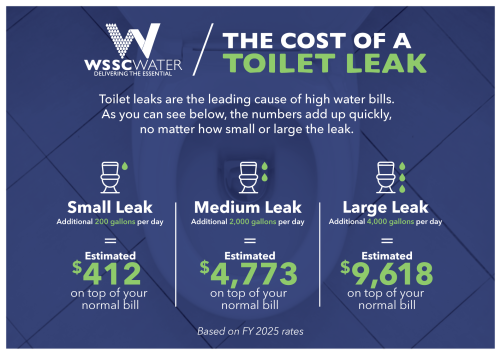 | 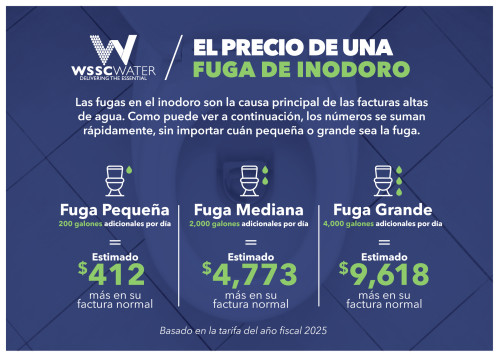 |
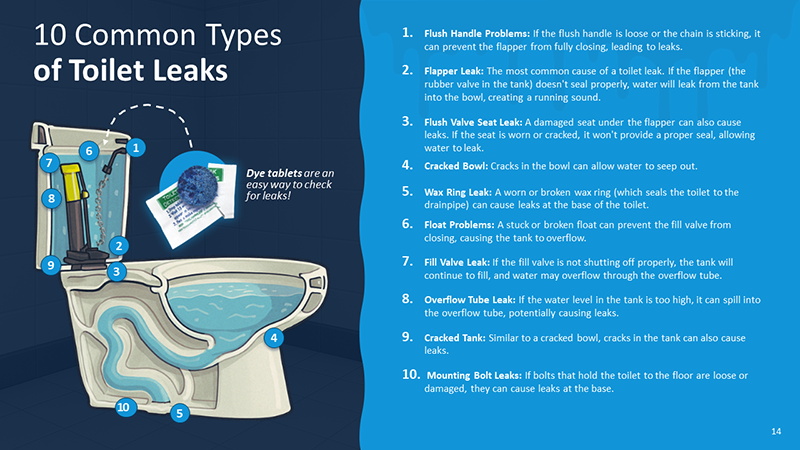
According to the EPA – most toilet leaks are caused by an old, worn-out flapper. A flapper is an inexpensive part of the toilet that should be checked periodically and replaced at least every five years. When it wears out, water leaks into the bowl. Customers don’t see the water and often don’t hear it, but a flapper leak can add hundreds if not thousands of dollars to a bill.
Watch this video to learn more.
If you see color in the bowl, you have a leak. That’s because water is leaking from the tank into the toilet bowl. You’ll want to make repairs as soon as possible, either doing it yourself or hiring a Registered Licensed WSSC Water Plumber. We recommend checking for toilet leaks twice a year.
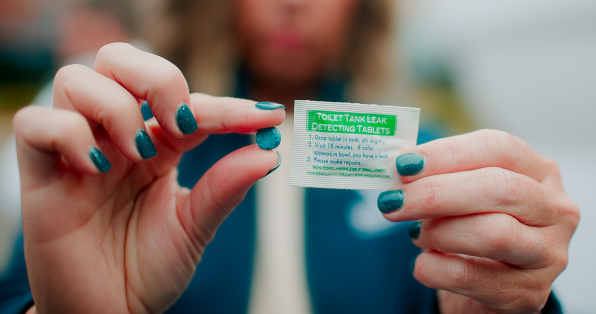
WSSC Water customers can request dye tablets by emailing communications@wsscwater.com. Please include the number of toilets in your home and your mailing address.
A leaky faucet can also waste water and money! At the rate of one drip per second… more than 3,000 gallons of water is lost each year. That’s equivalent to 180 showers! Old and worn-out faucet washers and gaskets frequently cause leaks. As the weather warms up, check outside spigots and irrigation systems for leaks and make repairs as soon as possible.
The EPA has links online to view many tutorials on how to fix a wide variety of faucets and other important information about household leaks or you can contact a Registered Licensed WSSC Water Plumber.
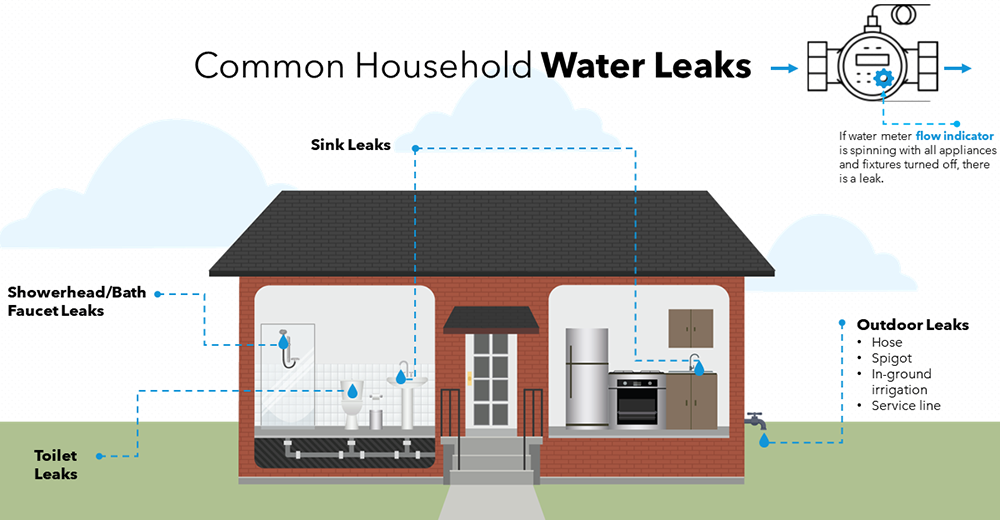
WSSC Water has created the CAP Leak Repair Program in conjunction with Habitat for Humanity Metro Maryland to repair on-property residential plumbing leaks to help save customers money and conserve water.
Call us at 301-206-4001. Our customer service advisors are available from Monday - Friday 8:00 a.m. - 6:00 p.m, or by email at customerservice@wsscwater.com.